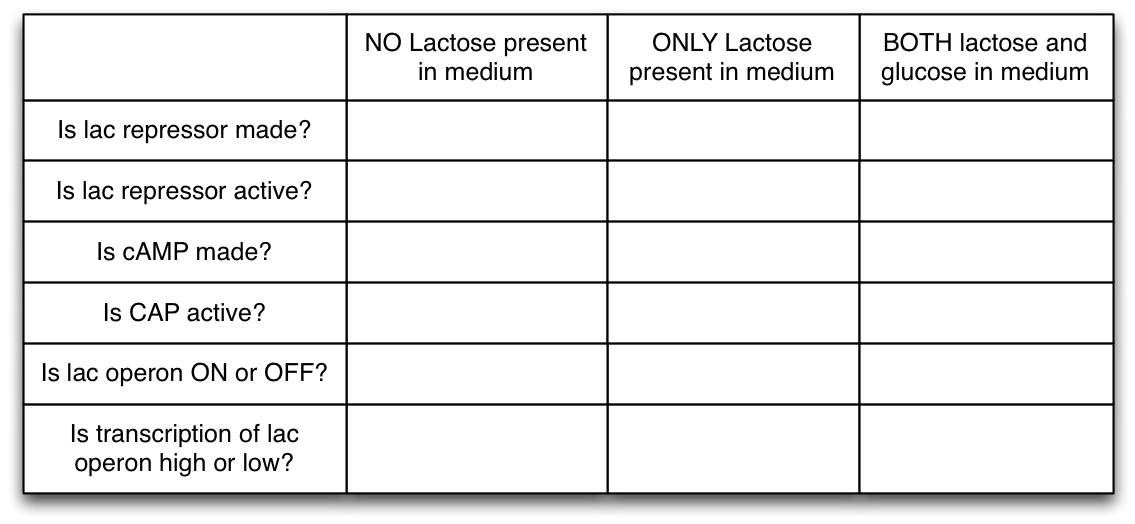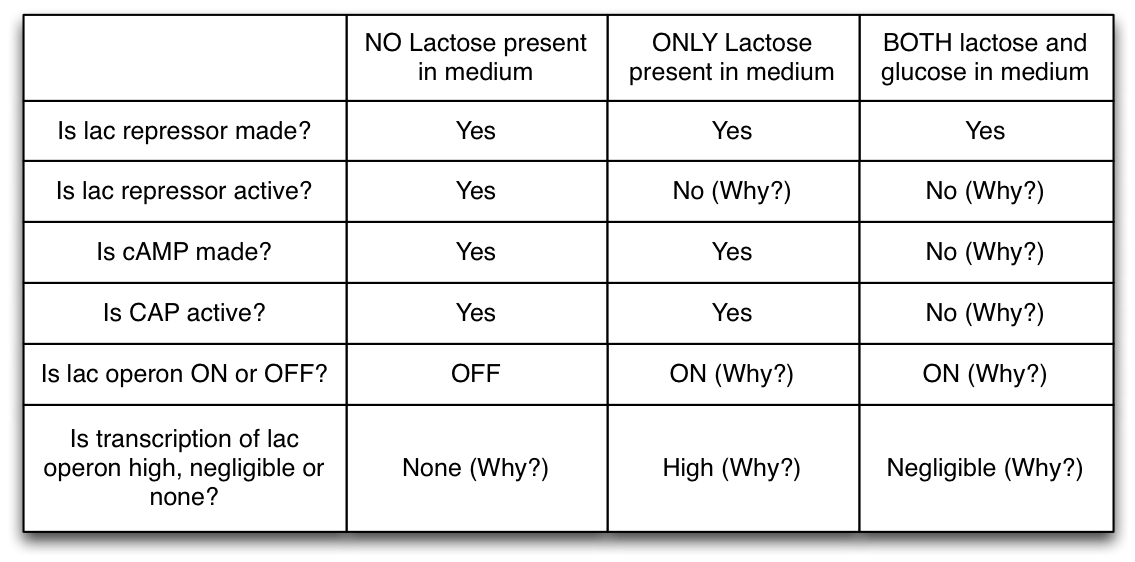- General concepts of gene regulation
- The lac and trp operons
- Catabolite repression
1. The concepts covered here can be reviewed in your textbook, pages 221-222, and your lecture notes.
2. Catabolite repression is an example of positive control. Start by reviewing what happens when E. coli cells are grown in medium containing (i) glucose only; (ii) lactose only and (iii) glucose and lactose. Draw two diagrams, one showing the growth of the bacterium on glucose only and lactose only, and a second one, showing growth when both substrates are present. Label your second diagram, more specifically what substrates are being used in different parts of the diagram.
3. Catabolite repression can be explained by the presence of a second "control mechanism" for the lac operon, a positive control switch. Make a diagram of the lac operon, adding to it the positive control. Draw two diagrams of the operon in the ON position, one with the activator working and one with the activator not working. Consult figure 8.15 in your text if you have problems with the diagrams. Label all parts of the operon. The positive control involves a protein and a small molecule. Make sure that in your diagram you have included a binding site for the activator protein in the right part of the operon. Draw your diagrams WITHOUT looking at the textbook and then compare them to the textbook figure.
4. In catabolite repression, the concerted action of the lac repressor and the lac activator make sure that lactose is only metabolized after all glucose has been used. Draw two diagrams of the extended lac operon (include both repressor and activator). In both of your diagrams, assume lactose is present in the medium. One of the diagrams should show what happens when glucose is also present, the other should show what happens when glucose is absent. Make sure to draw the lac repressor and indicate whether it is active or inactive and why? Make sure to draw the activator and to indicate whether it is active or inactive, and why? Make sure to indicate whether the operon is ON or OFF and whether the transcription rate is high or low. On a piece of paper, write a short paragraph, explaining what is happening with the operon in the presence and absence of glucose.
5. Now that you understand how catabolite repression works, you should be able to fill this table comparing the lac operon in three cases. Check your table (After you have filled it on your own) for accuracy by mousing over the word ANSWER below it:

ANSWER

6. After you have filled your table above and checked it for accuracy, note that many of the answer table cells contain the question Why? Go through the table and answer all of those questions. Understanding why repressor and activator proteins are active in certain cases, and inactive at other times is key to understanding gene regulation.
7. If you feel that you have mastered the concepts in this sub-unit, you can move to the next sub-unit, which explores mutations in bacteria.